Filipino Tamales
As an Amazon Associate and member of other affiliate programs, I earn from qualifying purchases.
When I was growing up, I knew the day was going to be special if Mom had Fiipino Tamales on the menu. Out came the fine china, nice flatware, the best tablecloth. To me, the kid then, this meant it was either Sunday, it was “fiesta” time (a town holiday ), or we were expecting guests. No matter. I knew Tamales was on the table, and it was going to be good!
The Tamales, is a Philippine rice cake made with coconut milk and “achuete” (also known as annato ). This rice-based goodie is topped with slivers of chicken, onions, peppers, carrots, potatoes, hard-boiled eggs. At times, toppings would also include Spanish chorizos, shrimps, cashew nuts, all nestled into the rectangle rice cake. Then this delicacy is bundled up in a large banana leaf, wrapped and tied with more banana leaves, and steamed for 12 minutes. It is served as a hearty snack, a dessert, or can be enjoyed as a meal in itself, be it breakfast, lunch or dinner. Yes, the Tamales is versatile!
I live in America now. But the Tamales memories keep haunting me. Over the years, I’ve made several attempts of Tamales. Ingredients were not easy to come by. In the Philippines, I grew up with coconut and banana trees in our yard. And rice was our staple food. So back then, every ingredient was accessible. In comparison, obtaining ingredients for Tamales in my American kitchen, has always been a challenge.
By coincidence, the week after I attended a cooking class using coconuts, rice and banana leaves, I was invited by a group of fantastic fellow food bloggers to a challenge called “TaytoRico”. The challenge called for cooking a dish that used the three ingredients of : Potatoes, Coconut and Rice. So this became more than just a challenge to me, it was sheer delight to participate in TaytoRico and cook alongside food blogger Jenni Field of www.pastrychefonline.com and her Twitter foodie friends @DailySpud and @TangledNoodle.
Here’s my entry to the food challenge, the Philippine Tamales and a step by step guide of how to make it.
The Philippine Tamales
Makes 16 pieces
Recipe adapted from “Memories of Philippine Kitchens”, as taught to me by Chef Romy Dorotan
1. First, soak 4 cups short -grain rice overnight in water. Make sure liquid covers rice.
2. Prepare: 1 large onion, quartered, 2 small Spanish chorizos, 1/2 cup coconut milk, a pack of banana leaves, slices of hardboiled eggs.
3. Gather the basic ingredients of the TaytoRico challenge: Potatoes, Rice, Coconut.
4. In skillet, heat 2 tablespoons achuete oil*. Add onion, sliced carrots and saute for 3 minutes. Add the sliced chorizos and shredded 2 cups chicken that’s been pre-boiled. Cook 3 to 5 minutes. Add salt & pepper to taste. Set aside when cooked.
5. Meanwhile, the day after soaking, drain the rice, place in food processor and process till finely grounded. This is called “galapong”. Strain well. Take any solids that didn’t go through and process again till ground fine. You will have about 5 cups of “galapong” (ground rice).
6. Combine the “galapong” with 7 cups chicken stock, the remaining 2 Tablespoons achuete oil, and a tablespoon salt. Boil over high heat. Reduce to medium and cook, stirring constantly, till thickened (like polenta), 3 to 5 minutes. Add coconut milk and whisk 1 more minute. Blend well. When cool , spread about 1/2 cup rice over the middle of a banana leaf, cut in a square shape, with a smaller leaf to hold the rice cake.
7. On top of rice-coconut rectangle cake, nestle the following: a tablespoon of the chicken mixture, potato slices, egg slice, chorizo slice, 2 cashews. Fold over the sides, first lengthwise, then width wide.
8. Place seam side down and tie the packages closed, crosswise and lengthwise (like a present) with banana leaf strips.
9. Stand the tamales upright, cover and steam until the banana leaves peel off easily, for 10 to 15 minutes.
10. Serve the Tamales as a snack or a meal. Both ways, it is good and special.
COOK’S COMMENTS: This tamales version is called the Kapampangan Tamales,according to Chef Romy Dorotan, to indicate it is a recipe from a province called Pampanga. Cooking in the Philippines is differentiated by region. Each region and province dictates the type of ingredients used depending on availability and abundance of vegetables, fruits or other foods in season.
*Achuete oil is made from putting together: 2 cups vegetable oil, 1/2 cup achuete (annatto) seeds, 6 whole garlic cloves, 2 bay leaves, 2 ancho chiles, crushed, stemmed and seeded. This mix is boiled together in a saucepan. Allow to steep for at least an hour or up to 2 hours. Strain and let cool. Store in an air tight container. This recipe of Achuete oil is from “Memories of Philippine Kitchens”by Amy Besa & Romy Dorotan. Personally, I make a batch and keep it for other dishes like grilled chicken and the like.
This Tamales photo is the Chef’s version, cooked by Chef Romy Dorotan at the Purple Yam Restaurant, Brooklyn, NYC.
(photos at Purple Yam Restaurant, by Christina Newhard)

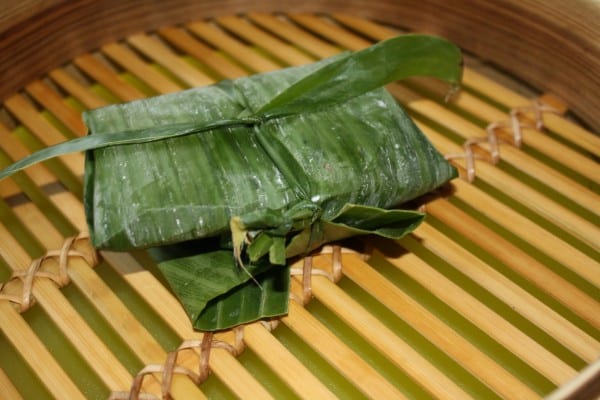
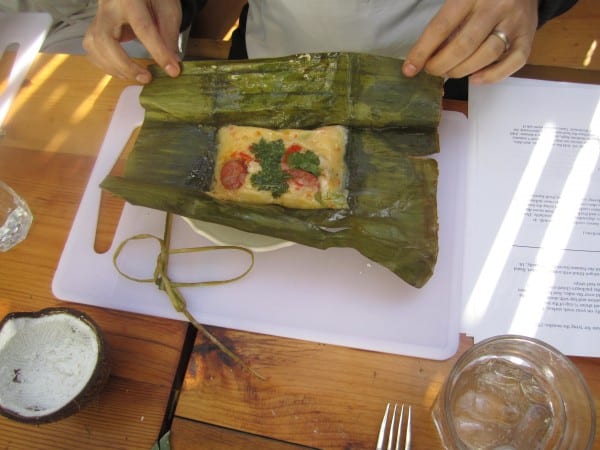
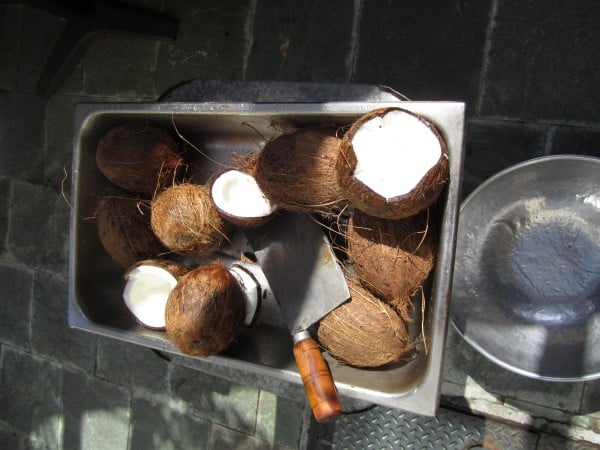
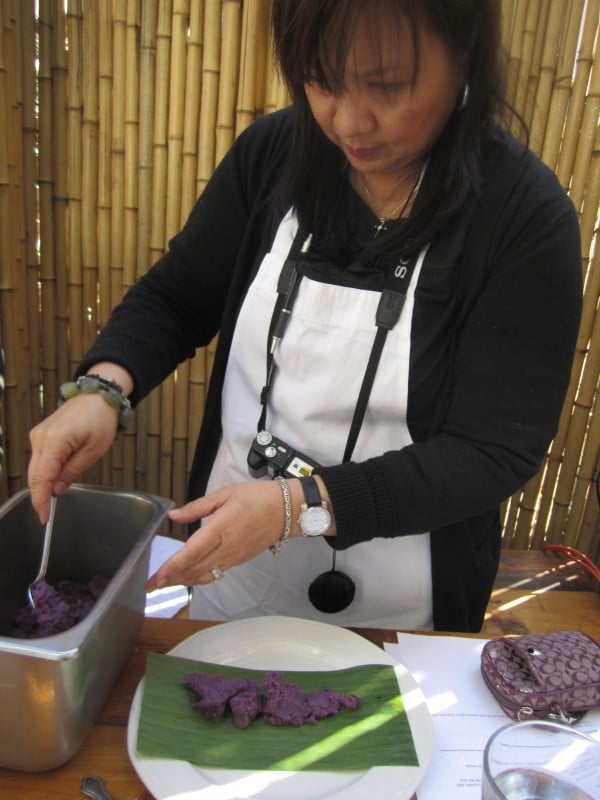
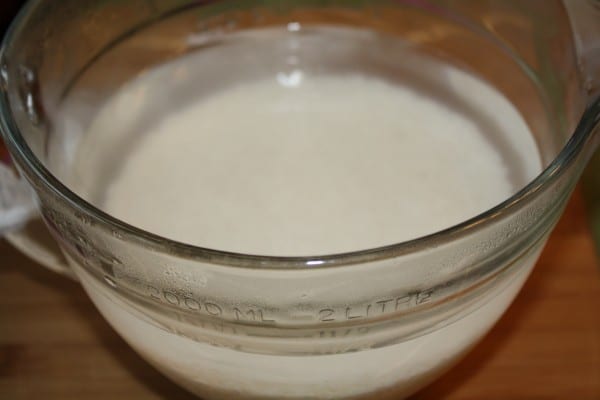
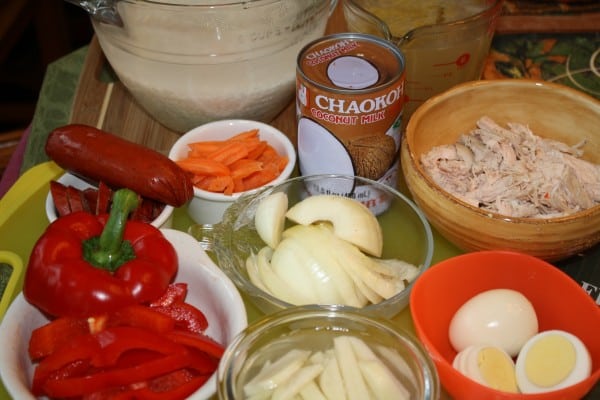
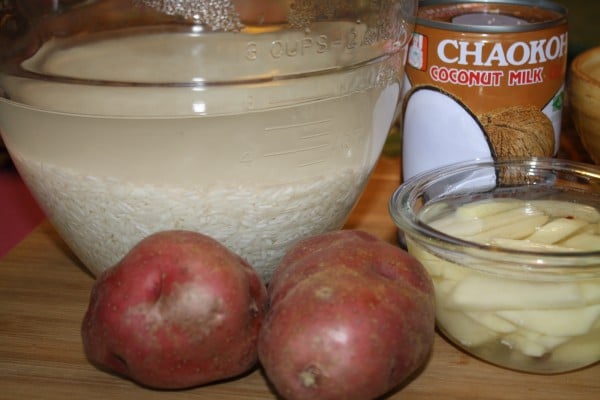
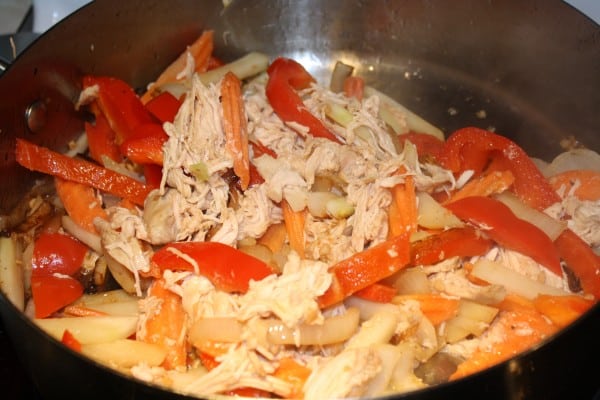
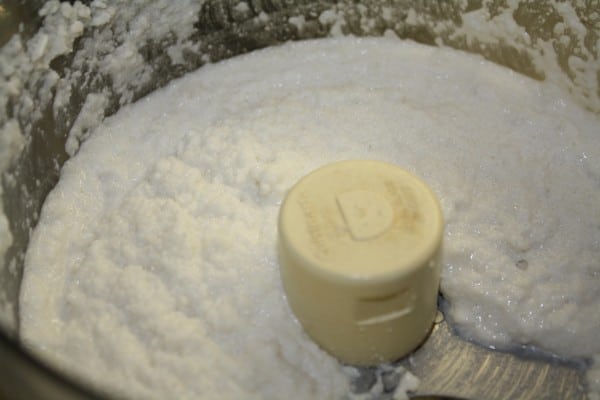



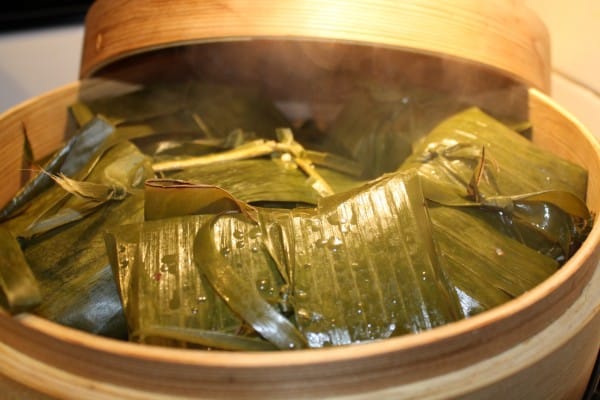
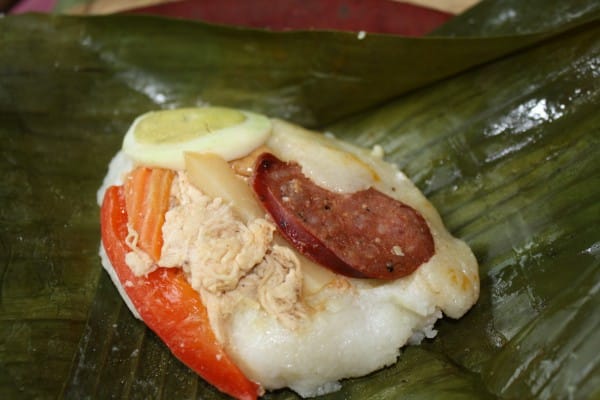

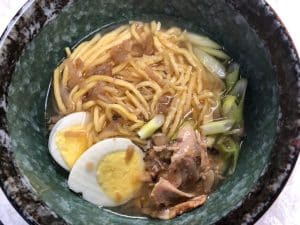
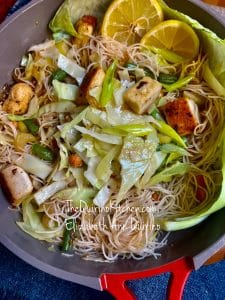
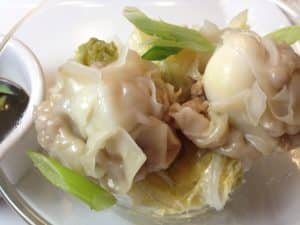
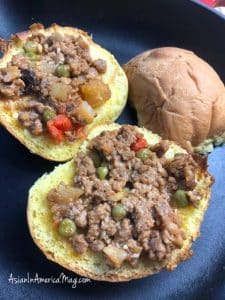
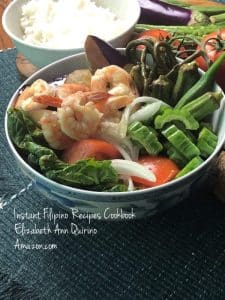
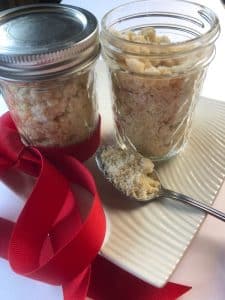
This is tremendous! I have never had Tamales as made in the Philippines (only Mexican tamales), but I will most definitely try to make it. I know what you mean about finding ingredients: it’s now the opposite for me as once-‘exotic’ ingredients (fresh banana leaves?) are now common. But then again, foods that I was used to buying so easily in the US are now harder to find or a bit more expensive. It’s always a trade-off! Thanks so much for joining us in the TaytoRiCo challenge – this is a fantastic contribution. 8-D
Thanks, Tracey. It was great joining you and the #TaytoRico partners for this cooking challenge.
these looks so good. I also didn’t know there was a Filipino version of the Tamales. I love it.
Thanks, Cherie. And yes, the Filipino Tamales has been around forever. There is a strong Spanish influence in Filipino foods. We were colonized for 500 years.
You have a very nice website Elizabeth Q! I just want to correct some minor assertions on your part pertaining the Filipino tamale. Many people falsely believe that Filipino traditions like the tamale or menudo come from the Spanish, well it doesn’t. The origins of some Filipino foods and words like the tamale were brought by Spanish from Mexico known as the New Spain from 1521 to 1821. The work tamale comes from the Nahuatl word tamali, of course the Nahuatl language was spoken by the Aztecs from central Mexico. Also, the Phillipines was not a colony of Spain for 500 years as you stated but more like 333 years.
…Also, the tamale was a staple of native peoples of Mesoamerica like the Mayans, Toltecs and Aztecs. So that Phillipino tradition among others is not really Spanish but Mexican.
As a neighbourhood country of the Philippines, Indonesia also has this version and uses two kind of material for wrapping. One is banana leaf and another version is with husk.
Great post, Elizabeth!
Thanks, Pepy!
This is fantastic. Like Tracey, I’ve never seen the Filipino version of tamales before. Thanks for playing the TaytoRiCo game and for teaching me a new thing! Love it, Elizabeth!
Thanks, Jenni. I owe this great opportunity to you. Thanks for giving me a chance to showcase this delicious recipe of Filipino Tamales. You should try it.
Absolutely I will try it–maybe we’ll have a “tamales from around the world” party this summer!
Thanks, Jenni. A “tamales” party is a great idea. You can go wild and have a buffet of ingredients around, guests can make their own. Add shrimps, peas, different peppers, veggie strips, and so much more!
This is definitely in the realm of the exotic for me – I’ve never cooked with banana leaves, and, though I’ve travelled in Asia, I’m not even sure that I’ve ever eaten anything that was cooked in them! Now, of course, I really want to 🙂
Thanks, @Daily Spud! I am flattered and honored by your kind comments. You should try banana leaves in your cooking. There are infinite ideas. Will be glad to share more recipes with you in the future.
I ate plenty of tamales in Manila when my mom and her sisters would make them but have never made it myself. Thanks for your post, love the step-by-step photos to guide me along–it’s given me the extra push to make these.
Thanks, Caroline ! Please do try making Tamales.It’s less daunting than it seems. The heart of it is the rice “galapong”. I remember we always had Tamales during Easter, so will make some more for the family this month.
I love your post, too… those little ube delights look inviting. Must try them!
OMG! I haven’t one of these since high school!
This is one of the things I’m most looking forward to when I go back to Zamboanga City to visit this summer. This and siopao.
Are they on the menu @Purple Yam? If so, I need to go there tonight. If not, I’m making ’em this weekend.
being from Pampanga this recipe will be very useful to me — thank you so much for posting it — Puerto Rican tamales is more like this – thank you to the Galleon trade, all the Spanish share a lot of foods (lechon, empanada, paella, menudo) a couple of years back while vacationing is Cabo San Lucas i came across a vendor selling tuba (coconut/palm wine) they even called it tuba filipino…
thank you again
Can one substitute rice flour instead of soaking the rice? What is the difference in taste and texture?
Thanks for asking, Joey. This recipe for tamales was taught by Chef Romy Dorotan of Purple Yam NYC in Brooklyn. It is the same recipe in their cookbook “Memories of Philippine Kitchens”. The Chef recommended using sticky or sweet rice (“Malagkit”) for this recipe. It has the best results. I don’t think rice flour will work for this one. Hope this info helps you.
I haven’t tasted Tamales–yet. It looks delicious and so pinoy with the banana leaf wrap. Your blog is an inspiration to patronize Filipino delicacies. And this one is definitely a keeper. One that could be passed on to another generation. The step by step photos helped a lot in my understanding of Tamales. This would also make a wonderful pasalubong delicacy. Thanks to you.
Thanks, Fina. Your comments inspire me to keep on cooking. Enjoy this tamales!